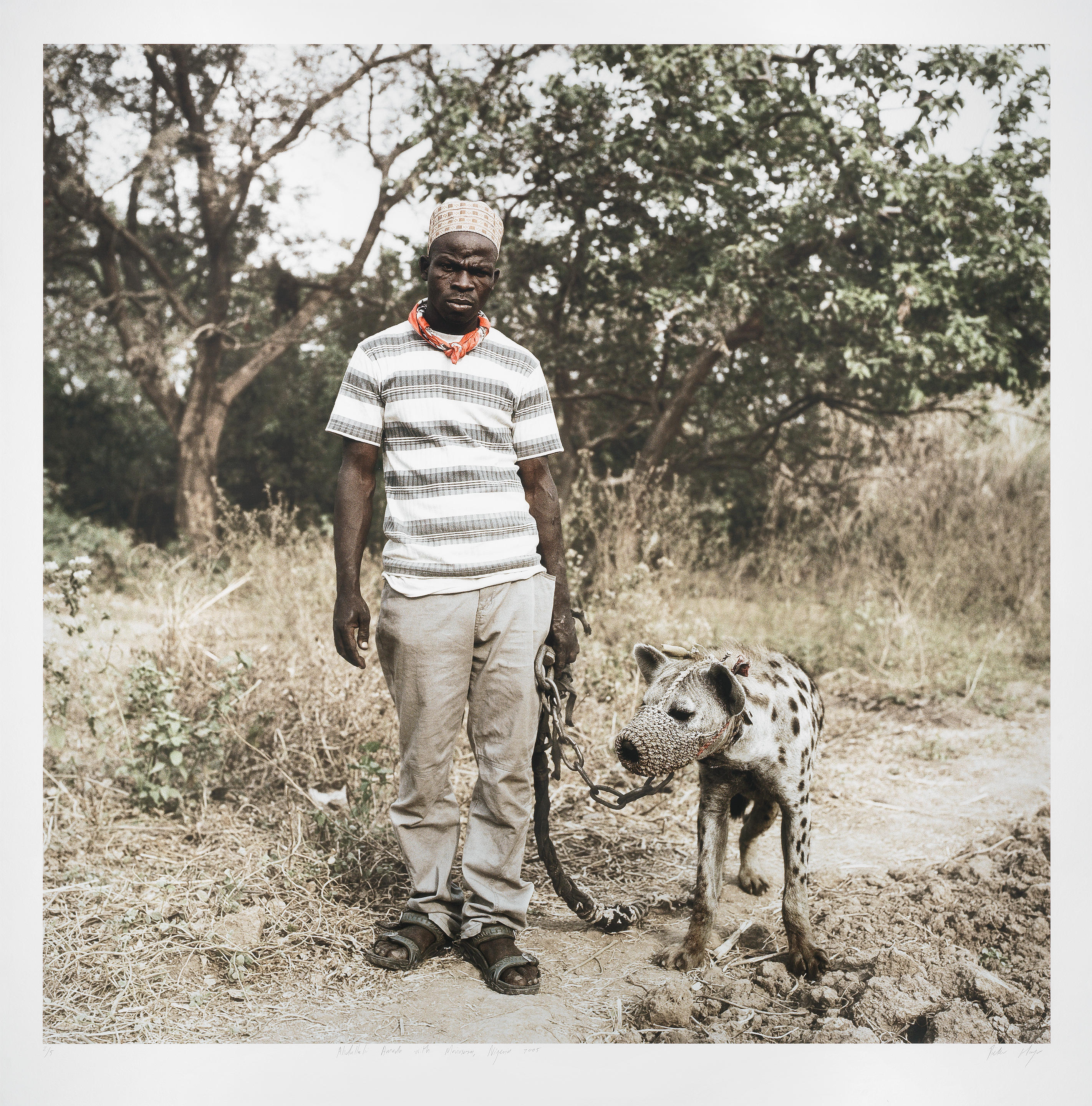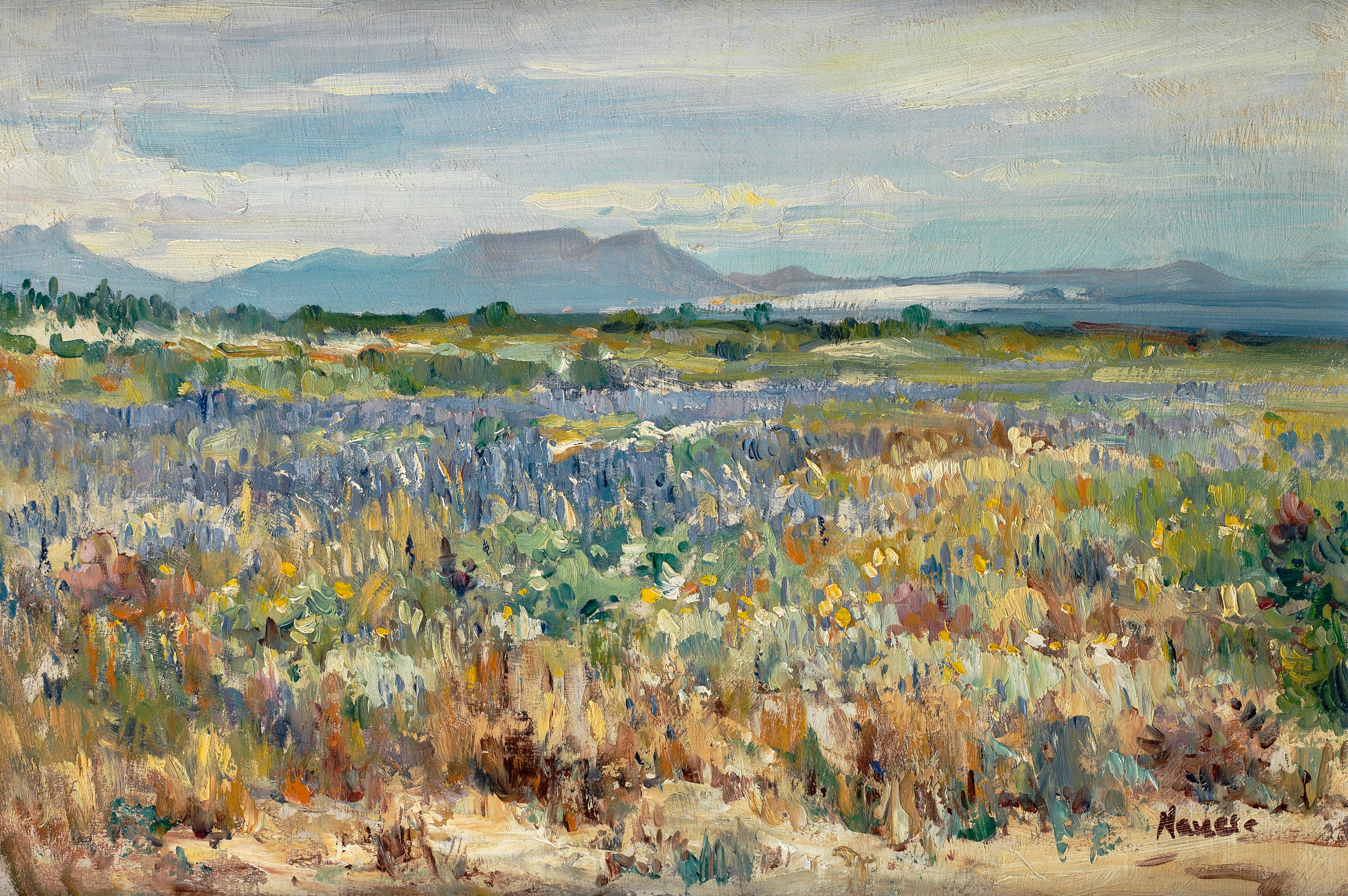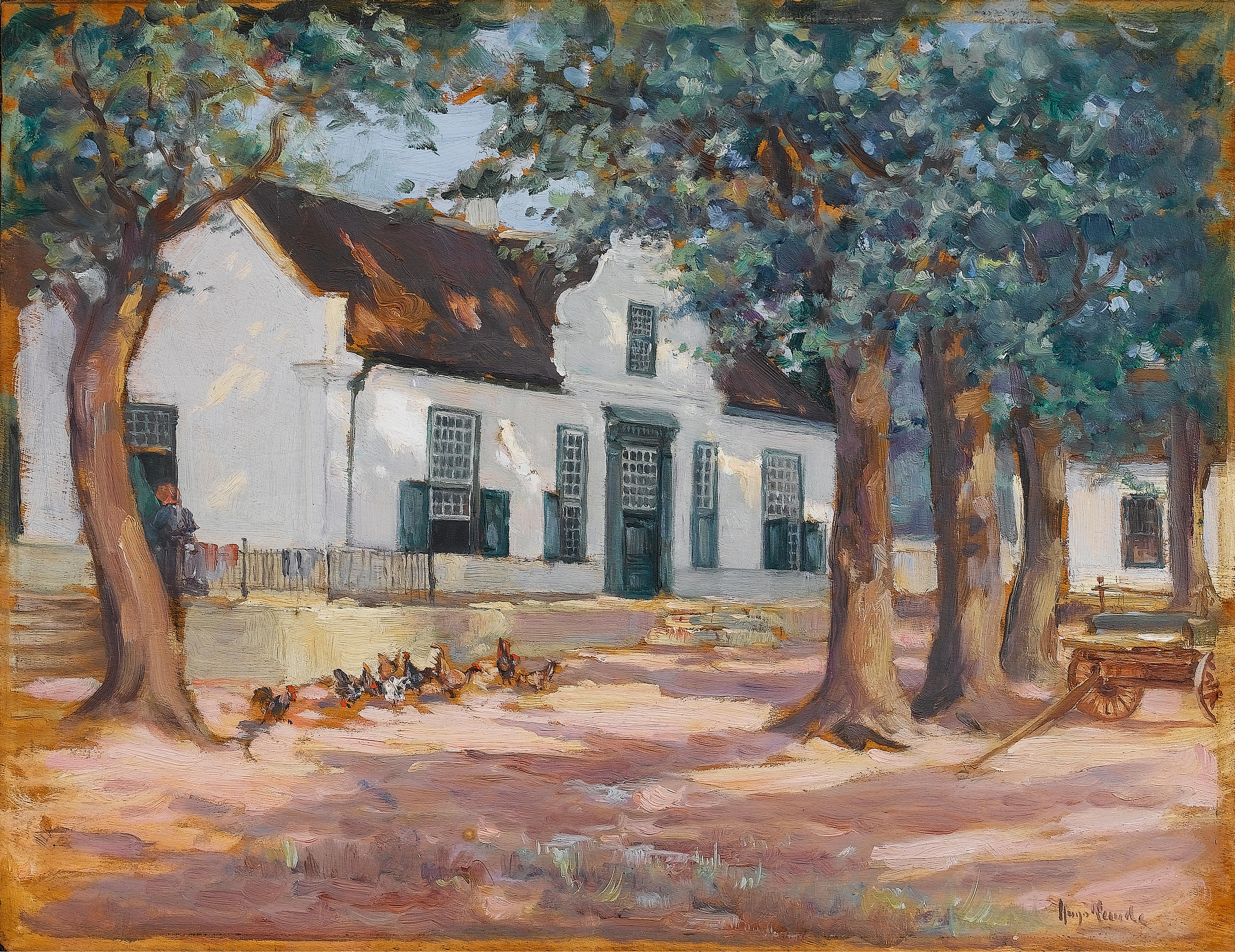Pieter Hugo (South African, b. 1976) John Kwesi, Wild Honey Collector, Techiman District, Ghana, from the series Wild Honey Collector, 2005. Numbered, partially titled, dated, and signed "7/15...Pieter Hugo" in ink on the verso. Chromogenic print, image sight size 13 3/4 x 13 x 3/4 in. (34.9 x 34.9 cm), framed. Condition: Good. N.B. "This series was made during a period when I was experimenting with different scenographies, as well as investigating aspects of labour across Africa. I saw an image of a honey collector taken by a Ghanaian photographer in a news magazine. It intrigued me. With the assistance of a local journalist I made contact with this group of honey collectors living in Techiman Municipal District, which is part of the fertile Brong-Ahafo Region. It is a full day's drive north from Accra into central Ghana, to a region famed for its cocoa production and agriculture generally. Africanised honeybees are crucial to the pollination process. Their honey is also highly prized; it is estimated that up to 60 percent of honey on the Ghanaian market is harvested from wild bee colonies. But it's a dangerous job. In June 2016 a bus in Ghana was attacked by a swarm of bees. This might explain the elaborate if makeshift protection worn by the collectors I photographed. Honey is harvested by burning the tree nests. As a result, the honey often has soot in it and can only be sold at local markets for low prices. It is a very destructive form of labour, but it is their only means of earning a living." -Pieter Hugo
Pieter Hugo (South African, b. 1976) John Kwesi, Wild Honey Collector, Techiman District, Ghana, from the series Wild Honey Collector, 2005. Numbered, partially titled, dated, and signed "7/15...Pieter Hugo" in ink on the verso. Chromogenic print, image sight size 13 3/4 x 13 x 3/4 in. (34.9 x 34.9 cm), framed. Condition: Good. N.B. "This series was made during a period when I was experimenting with different scenographies, as well as investigating aspects of labour across Africa. I saw an image of a honey collector taken by a Ghanaian photographer in a news magazine. It intrigued me. With the assistance of a local journalist I made contact with this group of honey collectors living in Techiman Municipal District, which is part of the fertile Brong-Ahafo Region. It is a full day's drive north from Accra into central Ghana, to a region famed for its cocoa production and agriculture generally. Africanised honeybees are crucial to the pollination process. Their honey is also highly prized; it is estimated that up to 60 percent of honey on the Ghanaian market is harvested from wild bee colonies. But it's a dangerous job. In June 2016 a bus in Ghana was attacked by a swarm of bees. This might explain the elaborate if makeshift protection worn by the collectors I photographed. Honey is harvested by burning the tree nests. As a result, the honey often has soot in it and can only be sold at local markets for low prices. It is a very destructive form of labour, but it is their only means of earning a living." -Pieter Hugo















Try LotSearch and its premium features for 7 days - without any costs!
Be notified automatically about new items in upcoming auctions.
Create an alert